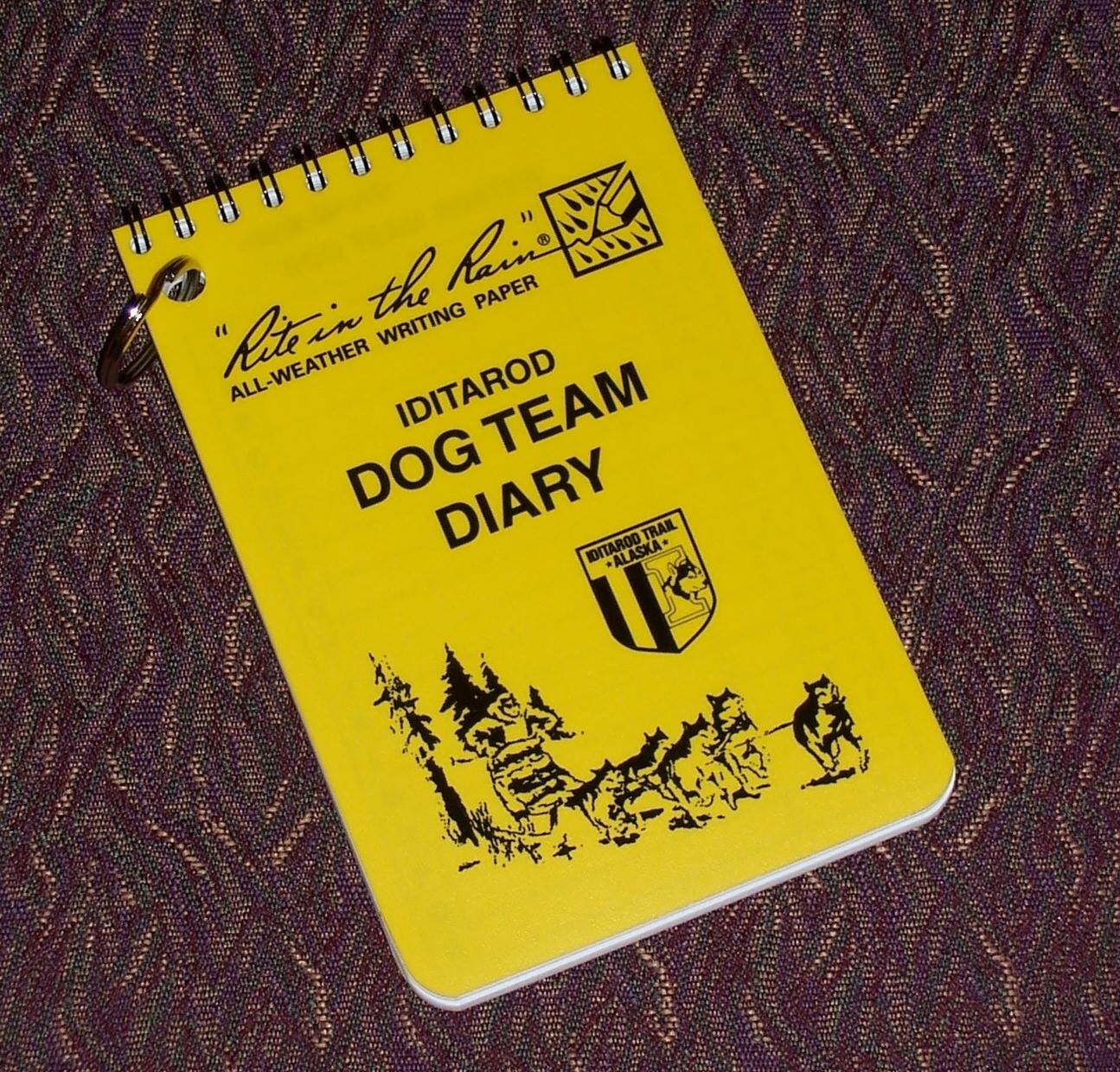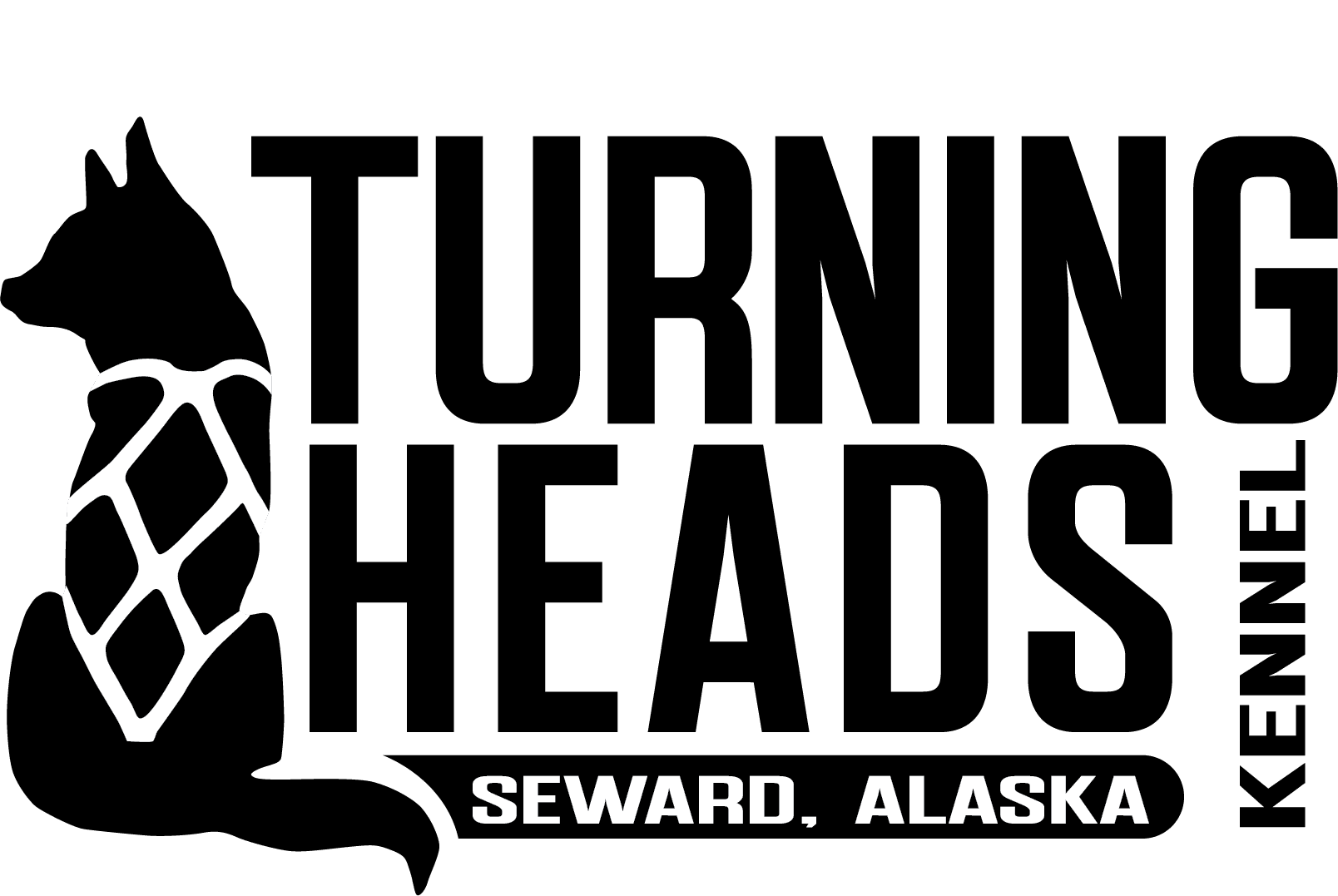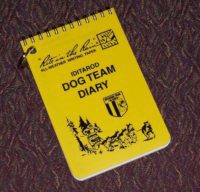One of the things most new fans to dog sledding want to know is how are dogs are taken care of out on the trail by vets and how the logistics of so many dogs is managed. During Iditarod and other dog sled races, mushers must carry a vet book. In Iditarod, it is a mandatory piece of gear and mushers are required to have a vet sign it at every checkpoint to ensure the dogs have been examined.
Each dog on Iditarod is given its own unique identification tag. The identifcation tag is composed of two values, a number and a letter.The number refers to the musher. Each musher’s value is determined by their starting position. In 2015, Travis started 56th so each of his dogs had a “56” on their tag. Each dog is then individually assigned a letter. Each musher is given their own tags so we put our tags 56A, 56B, 56C, on each dog on Travis’ team.

At the front of the vet book, each musher lists their dogs name and next to their dog writes down the letter of the tag that dog was given. Additionally, Iditarod takes down the name, tag of each dog, and their microchip number. This way dogs have two identifiers out on the trail: their microchip which can be scanned or their dog tag on their collar.
The vet book is an integral way for vets at different checkpoints to communicate what they see in a dog or in a particular dog team. It allows volunteers to quickly look up the name of a dropped dog and relay it to those back in Anchorage.


The vet book itself is rather small and is waterproof. Many mushers elect to tie it to their sled. If you do not have your vet book, you cannot continue down the trail. If you forget your vetbook at one checkpoint, you have to go back and get it — wasting valuable time.
We generally tie our vet books to our sleds so that we cannot lose them. It allows us to access them quickly and prevents the volunteer vets from accidently walking away with them.
Mushers are required to have a vet sign their vet book at each checkpoint. Mushers also have to sign the vet book. The vets may make notes or may simply put an “all good” or a smiley face. Common notes might be about dogs who were prescribed antibiotics.
The vet book is a valuable tool to help mushers and vets make sure that the dogs get the best possible care while out on the race.
This year in training, I am carrying my own “vet book” so that I can practice not losing it. For those who know me, they know my struggle. My book, however, is a bit different. I am using it to make notes about dogs on or directly after a run so that I can keep the best records possible on my team while training myself to hold onto the small yellow notebook. My notes are usually about when I fed or watered and the effects I’m seeing in my dogs. It’s something Aaron Burmeister mentioned casually at the rookie meeting so I figured I would give it a shot. If I’m going to practice carrying a notebook, I might as well make some notes!


